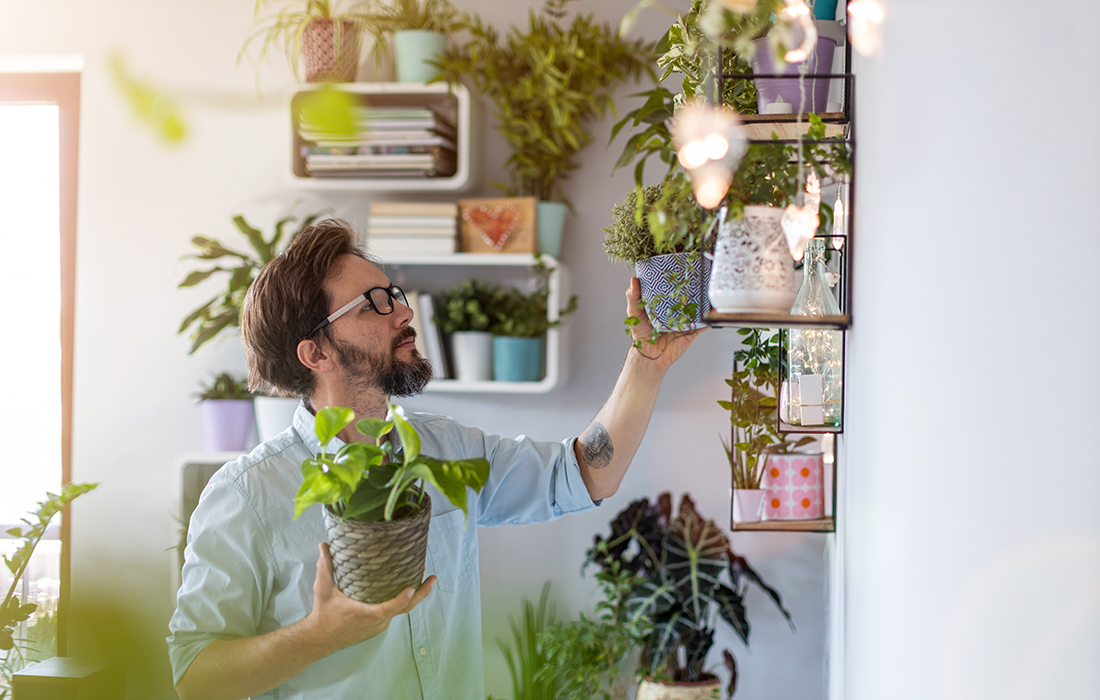There comes a time in any plant parent’s life when you start wondering “Is it time to repot?” This question tends to scare most plant enthusiasts, as there are a lot of factors you should take into account and consider before you actually start repotting: the season, the state of the plant itself, types of growing mediums, as well as what kind of pot to pick.
This may sound overwhelming, but don’t worry—we’ve got your back! Today, we will cover the most common types of planters on the market and factors you should pay attention to when buying a new container for your plant.
Factors to Consider:
Size
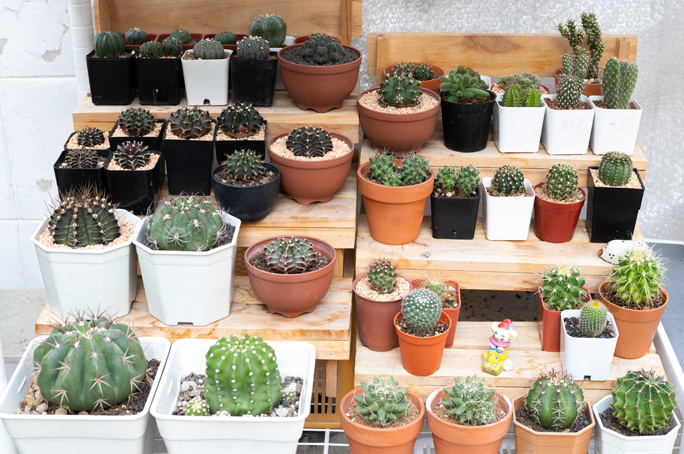
Before heading out to your local shop in search of a new pot, measure the diameter of the current one. Most pot sizes fall somewhere between 4 and 30 inches (10 and 76 cm). As a rule, a container that’s one size larger than the previous one will work just fine. So if your current pot has a diameter of 10 inches (25.5 cm), you can safely upgrade to an 11-inch (28 cm) container. Avoid going overboard with sizes: a small plant will struggle in a big pot, as its small root system won’t be able to deal with a significant increase of moisture.
Materials
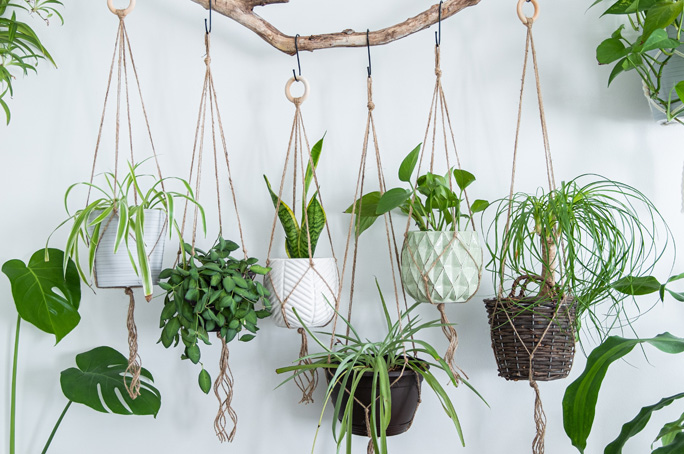
Terracotta Pots
Terracotta pots are a favorite of a lot of plant enthusiasts: they are porous and can easily absorb excess moisture, keeping fungal diseases away from your plant. This feature causes growing mediums to dry out faster than in any other type of container. That’s why terracotta pots are perfect for plants that hate having wet feet, such as cacti and succulents. What makes terracotta pots even more attractive to plant parents is their affordability: they tend to cost way less than most pots on the market. Moreover, the simple and minimalist look of these pots has recently become trendy again, so they’ll definitely add a stylish touch to your house.
Plants that like terracotta pots:
- Cacti
- Succulents
- Snake plants
- Aloe
- Swiss cheese plants
- Rubber trees
Plants that hate terracotta pots:
- Peace lilies
- Prayer plants
- Alocasia
Ceramic Pots
Ceramic pots are a popular alternative to terracotta containers. They can boast more variety—they come in different shapes, colors, and designs. Ceramic pots are perfect for moisture-loving plants: they are not as porous as terracotta ones, which allows the soil to retain water for a longer time.
Plants that like ceramic pots:
- Peace lilies
- Prayer plants
- Alocasia
Plants that hate ceramic pots:
- Cacti
- Succulents
Plastic Pots
If you are tight on money, then plastic containers are your best bet: these pots are incredibly cheap and available in most hardware stores. However, they probably won’t make all of your plants happy: plastic pots do not absorb moisture, which means that the soil will stay wet for a lot longer than in terracotta and ceramic containers. That’s why they are not recommended for plants that are used to dry conditions and require good drainage, such as succulents and cacti. But all of your moisture-loving plants will be more than happy in this kind of pot. Another thing to keep in mind when choosing a plastic pot is its color. Black pots can get excessively hot if exposed to direct sunlight. Heat-tolerant plants may feel fine in these conditions, but those that prefer cold temperatures may suffer from irreversible damage.
Plants that like plastic pots:
- Krauss’ spikemoss
- Umbrella palm
- Ferns
Plants that hate plastic pots:
- Cacti
- Aloe
- Snake plants
Drainage
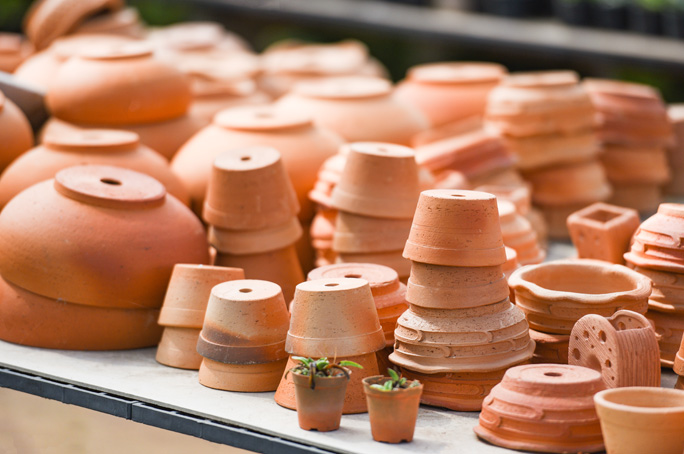
If you’ve shopped for planters before, you know the pain of finding a beautiful pot and realizing that it has no drainage holes in it. Though you may feel tempted to get one, we don’t recommend buying them, especially if you’re a plant novice. Without a drainage hole, excess water has no way to escape the container, which may lead to fungal diseases that are difficult to treat and can ultimately kill the plant.
Don’t get discouraged, though: there are ways to incorporate planters with no drainage holes into your interior. You can try out the common practice called “double potting”: pot the plant into a plastic container with drainage holes and put it into a cover pot of your choice. This way, you’ll get the best of both worlds by preventing deadly infections and enjoying a stylish planter.
Shape
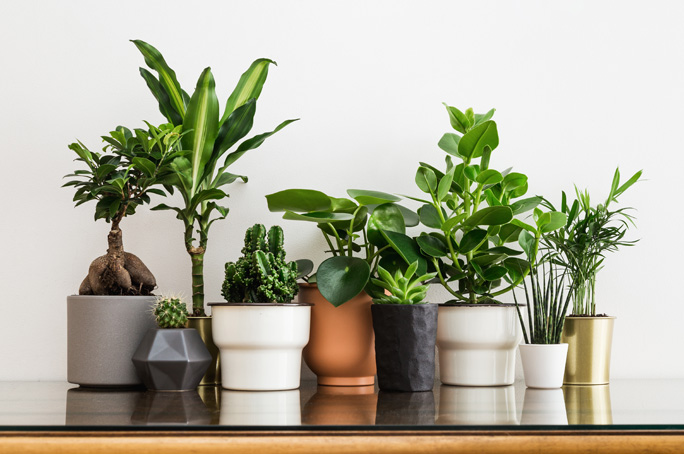
Last but not least, the shape of a new pot is essential to your plant’s well-being, too. You may not notice it throughout the period of active growth, but this factor will definitely come into play during the next repotting session. Roots tend to take the shape of the pot, so you may end up having to remove and damage them while trying to take the plant out of the container. Try to avoid pots with a narrow top and a wide base, as well as any weird shapes that may become a problem later on.
We hope that this guide will help you pick the perfect pot for your plant!
